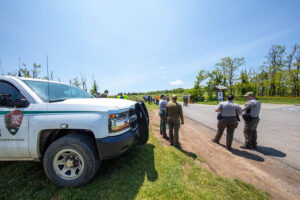
With over 1.7 million visitors annually and visitation on the rise, Shenandoah National Park is expecting a busy season ahead as summer approaches. For the Park’s Search and Rescue (SAR) program, ensuring the safety of visitors while protecting the Park’s natural resources remains a top priority.
The Shenandoah National Park Trust is proud to assist these efforts. In 2025, the Trust funded the purchase of two Athena GTX Wireless Vital Signs Monitors (WVSM) with capnography, for Shenandoah’s Seach & Rescue (SAR) personnel to use in the field.
This small, lightweight, FDA-cleared patient monitoring system allows a paramedic or park medic to continuously monitor a patient’s blood pressure, heart rate, oxygen saturation, end-tidal CO2, and cardiac rhythm in remote backcountry settings. This state-of-the-art device enhances the park’s emergency response capabilities by allowing providers to monitor critically ill or injured patients in remote and inaccessible areas of the park where traditional cardiac monitors are not an option.
Despite their commitment to safety, SAR personnel face increasing challenges, such as rising call volume, limited resources, diverse staffing and training needs for multi-role professionals, environmental factors, and visitors’ over reliance on technology.
Logan Tucker, who currently serves as the Acting Supervisory Ranger & SAR Coordinator, had this to share when asked about the Search and Rescue program’s main objectives and how the Trust has played an essential role in enhancing their work operations:
“To keep visitors safe, the dedicated women and men of NPS aim every day to enact SAR’s primary objectives, which include:
- Rapid response to emergencies – From lost hikers to serious injuries, SAR teams operate across rugged and often remote terrain.
- Preventative Search & Rescue (PSAR) – Educating visitors on safe hiking practices, gear recommendations, and route planning.
- Resource stewardship – Balancing emergency response with conservation efforts to minimize environmental impact.
Without the Trust’s support, our ability to provide timely and effective rescues would be significantly hindered. These contributions directly translate into lives saved and offer a safer experience to anyone who visits Shenandoah National Park,” Tucker said.
This mission critical work cannot be done alone, and the Shenandoah National Park Trust is proud to stand together with our search and rescue teams on the front lines in Shenandoah.
Interested in learning more about Logan and his team’s work? Check out the full At Home in Shenandoah: Stewards of Safety Webinar linked here!

